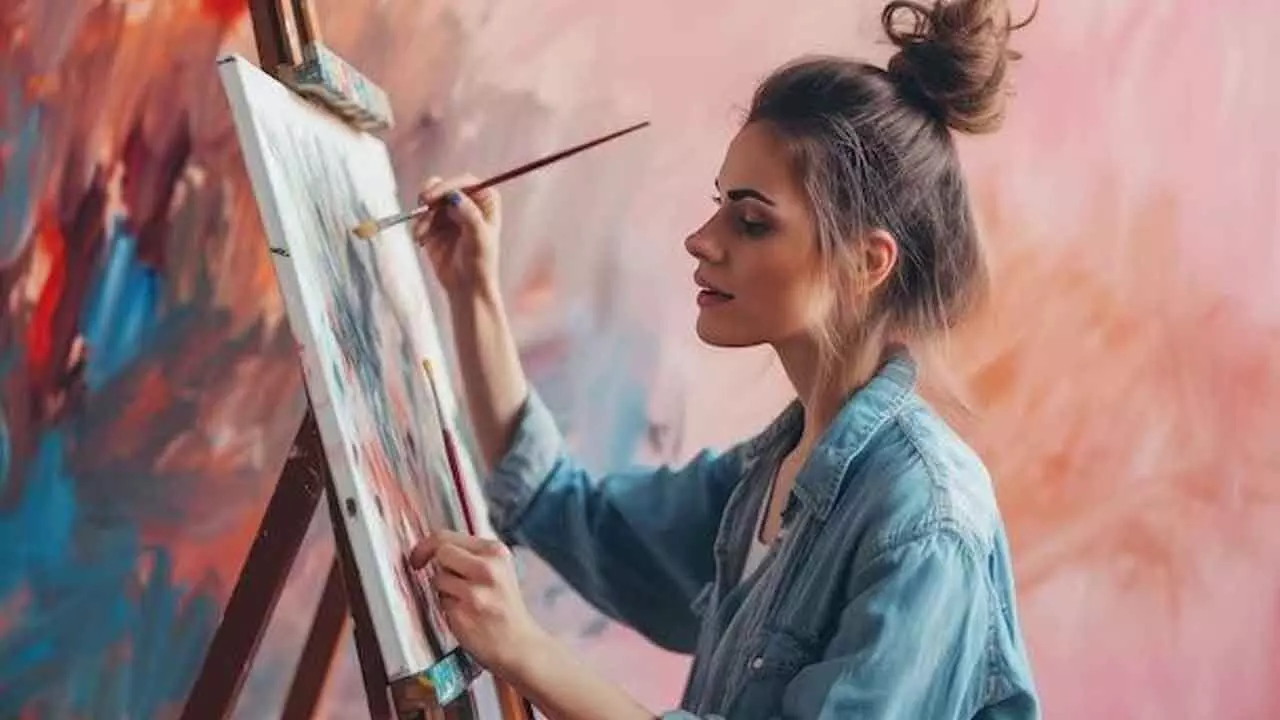The healing power of creativity: Art as a path to mental well-being

Art has long been a refuge for the mind, offering a powerful way to express emotions, process experiences, and foster resilience. From painting and dance to storytelling and music, creative expression helps reduce stress, enhance cognitive function, and support emotional well-being. As mental health concerns rise globally, integrating art into daily life and education can serve as a transformative tool for self-discovery, healing, and empowerment
Art has long been recognized as a powerful catalyst for mental well-being. Engaging in artistic endeavors, be it painting, music, dance, literature, or theater provides individuals with avenues to express emotions, process experiences, and foster connections. Scientific studies have demonstrated that creative activities can reduce stress, enhance cognitive functions, and alleviate symptoms of anxiety and depression. For young people, in particular, art serves as a medium for self-discovery, emotional intelligence development, and resilience building.
TheEconomic Survey 2024-25 highlights the concerning decline in mental well-being and its impact on both individuals and economies. It calls for interventions at school and family levels to encourage healthy pastimes such as engaging in art, which can significantly enhance mental well-being. Globally, 20% of young people experience mental disorders, but only 7.3% of India’s 365 million youth report mental health problems (Gaiha et al., 2020). These figures underscore the urgent need to foster environments where mental health is prioritised and supported. Similarly, theNational Mental Health Survey (NMHS) 2015-16by NIMHANS found that 10.6% of adults in India suffer from mental disorders, with urban areas being particularly affected.
The role of creative expression in emotional resilience
In the face of rising mental health concerns, the need for emotional resilience has never been greater. While medical interventions play a crucial role, one of the most powerful yet often overlooked tools for mental well-being is creative expression. Whether through painting, music, dance, literature, or storytelling, it offers a way to process emotions that may be difficult to verbalize. Unlike structured interventions, it resonates in a way that feels natural—meeting people where they are rather than prescribing how they should feel.
For many, creativity offers more than an outlet; it serves as a refuge. In moments of stress and uncertainty, indulging in activities like drawing, writing, crafting narratives, and creating characters, allow them to understand their emotions and eventually, make peace with. This process fosters a sense of control, clarity, and resilience that helps individuals comprehend complex emotions in a way that other forms of intervention might not.
Storytelling: A bridge for mental health conversations
Storytelling plays a crucial role in mental health advocacy by helping individuals connect with their emotions and find the courage to express struggles that might otherwise remain unspoken. By identifying with fictional characters and their journeys, people can relate to their own challenges more easily, which opens the door to important conversations about topics that are often left in silence. This form of expression creates a safe space for individuals to share their experiences, fostering empathy and reducing the stigma surrounding mental health.
Integrating creativity into mental health initiatives
As young people face increasing pressures, access to creative engagement is more essential than ever. Beyond self-expression, it becomes a means of communication, empowerment, and self-discovery—especially for those who struggle to articulate their emotions in traditional ways.
As leaders and educators, we need to recognise this and integrate it into mental health initiatives. Creativity should not be an afterthought but a key part of education, public health strategies, and community programs. Normalising creative outlets within school can help cultivate emotional resilience, providing a proactive approach to addressing mental well-being while empowering young people to manage their mental health in a positive and constructive way.
The path forward: Embracing creativity for mental wellness
As we continue to push for mental health awareness, we must acknowledge the vital role of creative expression in this journey. Whether through music, movement, illustration, or writing, it provides a safe space to process emotions, express oneself, and find strength. It allows people to understand their feelings without fear of judgment and to connect with others who share similar experiences.
The future of mental health advocacy lies in embracing creativity not as a luxury but as a necessity. By fostering a culture where expression is encouraged and emotional well-being is destigmatised, we can empower individuals to navigate life’s challenges with resilience, confidence, and hope.
(The author is Founder of MindCanvas)


